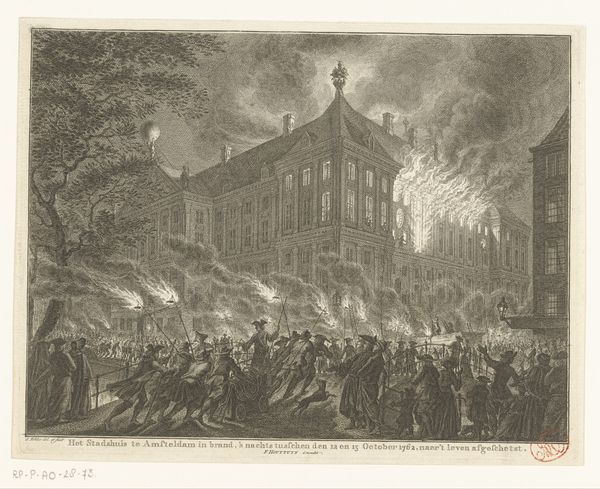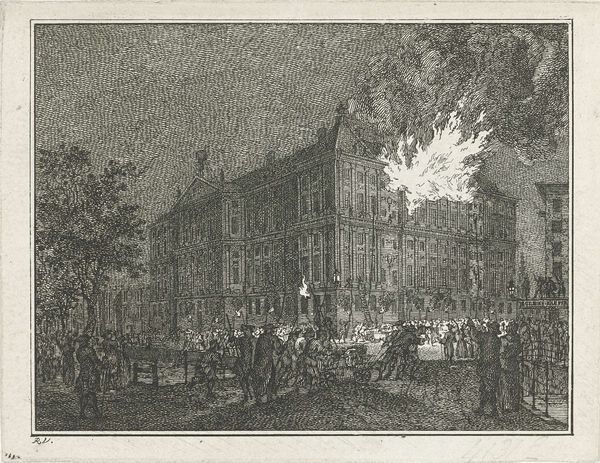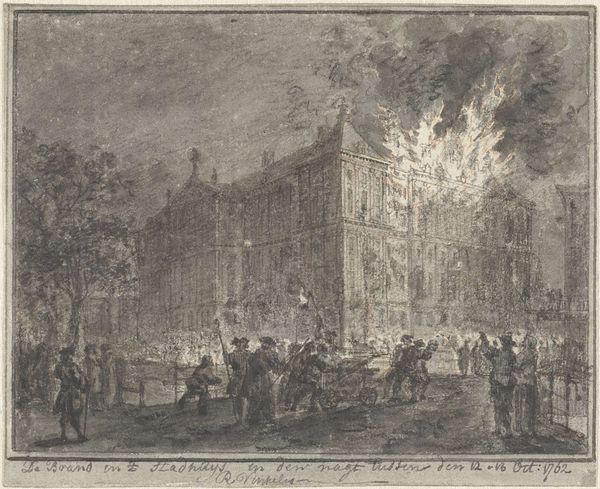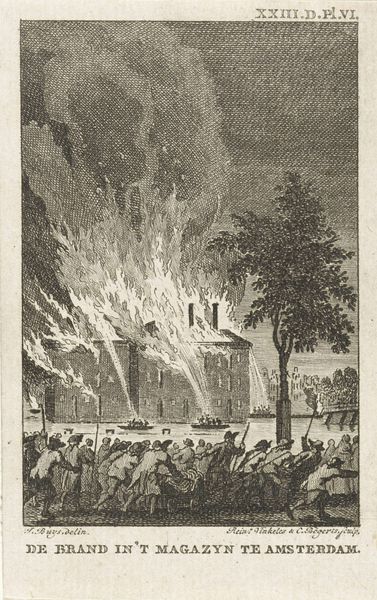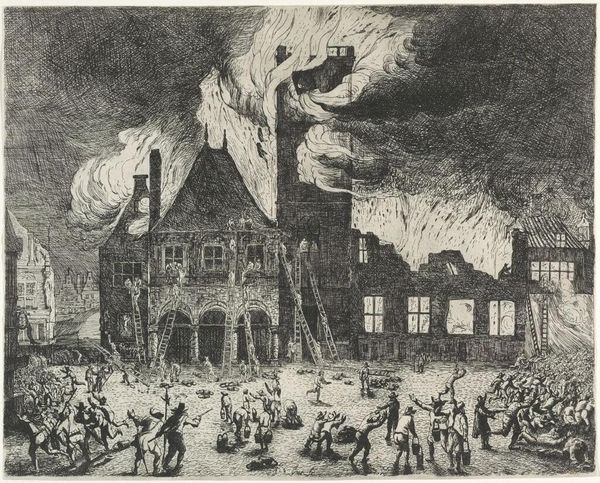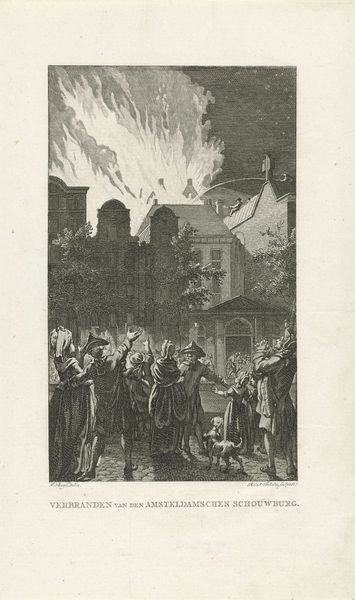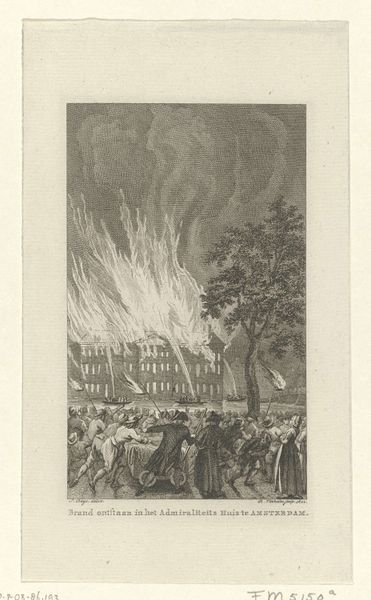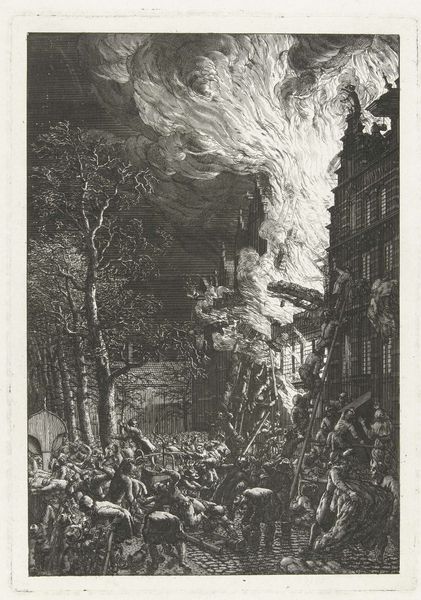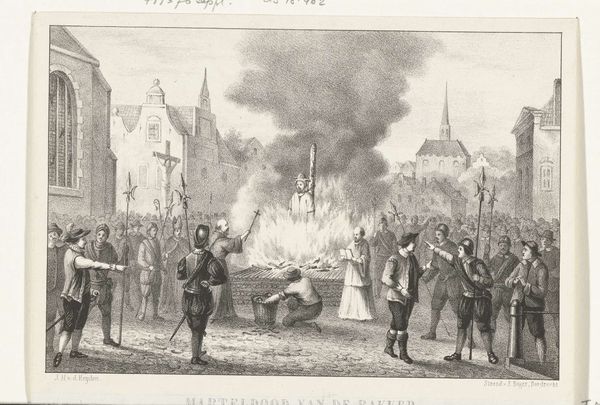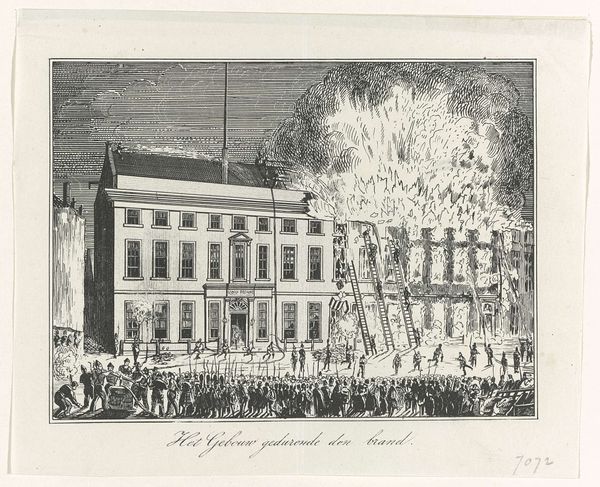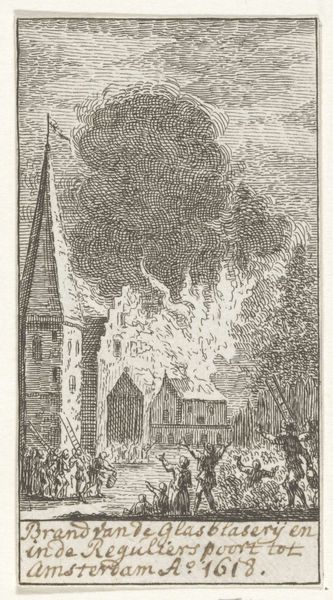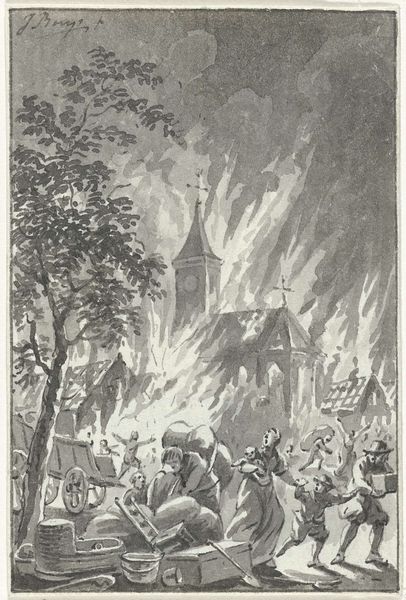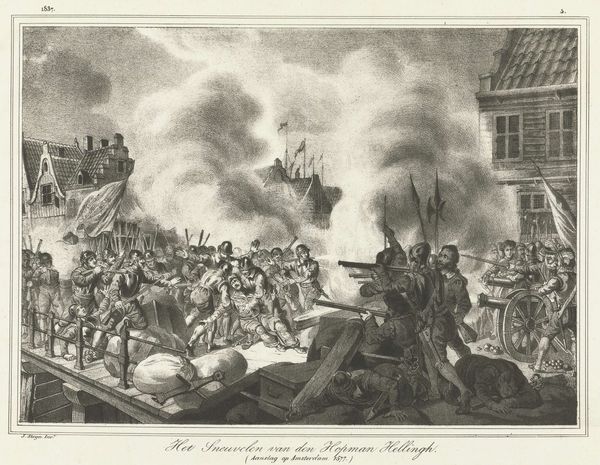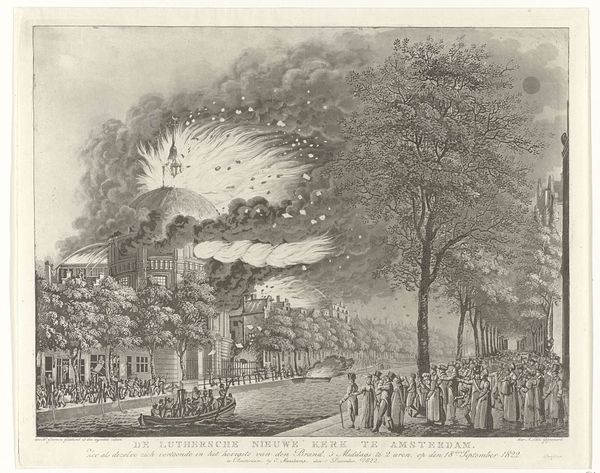
Dimensions: height 180 mm, width 235 mm
Copyright: Rijks Museum: Open Domain
Simon Fokke made this print of the Amsterdam City Hall fire in 1762. It's an etching, made by drawing into a wax-covered metal plate with a sharp needle, then bathing it in acid. The acid bites into the metal where the needle has exposed it, creating lines that hold ink, and allow for printing. This process could have been used to produce inexpensive images, disseminating information rapidly. The print medium also suggests that the making of multiples was central to the work’s purpose. The lines of the figures and the building’s architecture would have demanded incredible precision. Also note the way that Fokke created an image of immediacy; the speed and terror of the unfolding scene of the fire. The act of reproduction is key here. The image was not just documentation but was also a means of bringing the news to the public. So, in considering the fire, we also have to consider the crucial role that printmaking played in public life.
Comments
No comments
Be the first to comment and join the conversation on the ultimate creative platform.
